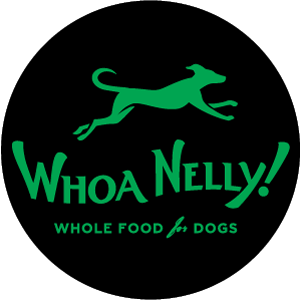Can My Dog Eat Fish?
In This Article
Short answer: yes they can! In fact, most dogs should be eating fish on a regular basis.
Fish is one of the best ways to add “good” fats to your dogs diet. They are a nutrient dense food containing a wide range of vitamins and minerals. But more importantly, fish is an excellent source of DHA and EPA, omega-3 fats which are hard to get from other sources.
Most dog foods do not contain enough omega-3 (or worse, they contain rancid or oxidised fats) so fish is an excellent way to add balance back to the diet. Most dogs love the smell and taste of fish as well which makes it an easy and healthy addition to their dinner.
Why feed your dog fish?
There are many health benefits of feeding your dog fish:
Fish is a great source of Essential Fatty Acids (EFA’s), in particular DHA and EPA which form part of what we refer to as “omega-3”. These fats are essential to a healthy coat and skin, as well as improving cognitive function and reducing inflammation in the body.
EFA’s also impact your dogs “mood” or behaviour. One study found that dogs with aggression issues had lower levels of DHA and a higher level of omega-6 than dogs without aggression issues. Adding fish to the diet can help to calm these aggressive dogs.
Deficiencies in EFA’s can lead to poor immune function, skin and coat conditions, vision difficulties and other serious health problems. Having a good source of omega-3 in your dogs diet is essential to their health and happiness.
Omega-3 fats explained
There are three types of omega-3 fatty acids:
ALA (α-linolenic acid)
EPA (eicosapentaenoic acid)
DHA (docosahexaenoic acid)
ALA is typically found in plant matter (like flaxseed), while EPA and DHA are found in marine animals. While your dog is able to synthesis EPA and DHA from ALA, it is only in limited amounts. This is why the NRC nutritional guidelines list EPA and DHA as dietary requirements. As there aren’t many other dietary sources of EPA & DHA, feeding fish is often the primary way of providing these fats in the diet.
Ensuring the ratio of omega-6 to omega-3 is balanced is critical to your dog’s health. The ideal balance we are looking for is between 6:1 and 3:1. It’s important to note that providing the full spectrum of fats is really important - we need a dietary source of DHA and EPA, not just ALA.
Diets containing omega-3 from ALA only (plant matter, no fish) are less effective at modifying inflammatory and immune responses. One study found that diets containing fish outperformed diet containing flaxseed with the same omega-3 : omega-6 ratio.
If your dog is able to eat fish it should absolutely be a part of their diet!
What to buy
If the food you are feeding your dog does not contain fresh fish, you can still add it to their diet. The easiest way to do this is to feed tinned sardines or mackerel, available from your local supermarket. Try to get the fish in spring water if possible, as if they are stored in oil it will contain high amounts of omega-6. You can also get fresh or frozen sardines at your local fish monger. When feeding fresh fish be mindful of small bones, and grind or mince the fish if needed.
Whether you feed canned or fresh, the type of fish you feed is important. You want to feed a small, oily fish to make sure you get all the benefits from the fats. Avoid larger fish like tuna as these often contain heavy metals. We use sustainably sourced, sashimi grade salmon in our Whoa Nelly! raw dog food.
How to feed
If supplementing, the optimal amount to feed depends on many factors. This includes the age of your dog and their current diet.
Dogs fed a kibble based diet will need more fish to help reduce the inflammatory effects of processed food. One recommendation is to aim for 50 to 75mg of EPA & DHA combined per kg of body weight. That works out (roughly) to 100g of tinned sardines per 7kg of bodyweight. This of course is a general guideline and there are many factors which will effect the optimal amount your should feed.
However, even adding even one tin of sardines a week will make an enormous difference to the health and wellbeing of your dog. If you are feeding a dry food diet, please add fish to their diet!
What about fish oil?
Fish oil can be handy as it is a concentrated form of fish, and can help promote the health benefits we have discussed. The issue with fish oils is that they oxidise quickly when exposed to air - which is the second you open the bottle. This oxidation causes the fats to go rancid, and negates much of the benefits we are trying to achieve through adding high quality Omega-3 fats to the diet. For this reason I do not recommend supplementing with fish oil - feed fresh fish instead 🐾





